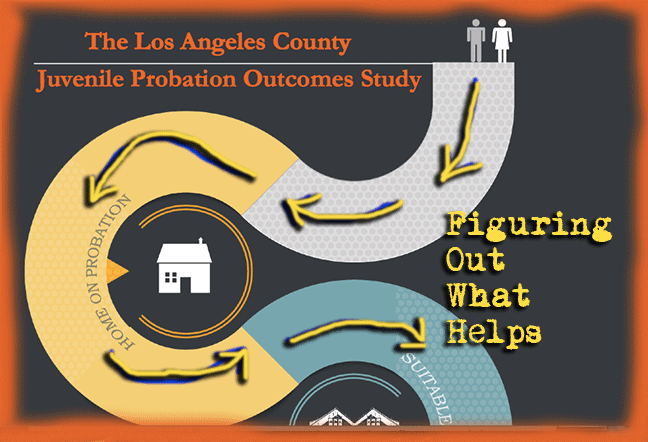In recent years, juvenile judges around California have been making an effort to put kids on probation instead of sending them to juvenile lock-ups.
That’s the good news.
The idea is that probation will give kids the help and guidance they need and thus improve their ability to stay out of trouble in the future, stay in school, and so on.
Now here’s the bad news.
It seems that, in many California counties, the data suggests that the juvenile probation system is not very good at all at helping kids turn things around. Instead, probation seems to increases the likelihood that a young person will wind up being detained in a juvenile facility.
For example, last year in Yolo County, probation violations were reported as the most common reason kids were incarcerated,
And in LA county, 76 percent of the kids in the county’s juvenile camps were on home probation immediately prior to whatever action resulted in their being sent to camp, according to the Los Angeles County Juvenile Probation Outcome’s Report released in April of this year.
LA’s stats don’t necessarily mean that probation is causing further harm. But the numbers certainly suggest that, for a significant percentage of kids, probation isn’t helping.
Soraya Shockley of NPR’s Youth Radio has a story on this pattern. Here are some clips:
...That’s what happened to one 18-year-old, whom Youth Radio is not naming in order to protect his privacy and his juvenile records, which are protected by the law. He stole two pairs of sneakers, worth $85 total, when he was 15. This was his second arrest for what the court found to be a minor offense.
“And from there everything changed, because that was my first time on probation,” he says.
Instead of sending him to juvenile hall, a judge put him on probation, which can last until age 21. His court orders included nearly two-dozen conditions he had to follow, says Kate Weisburd, his attorney.
“Attend classes on time and regularly,” she read. “Be of good behavior and perform well … be of good citizenship and good conduct.”
Weisburd, who co-directs a youth justice program at the East Bay Community Law Center in Berkeley, says that while adults on probation mostly have to avoid committing a new crime, kids on probation have to abide by these sometimes subjective requirements — or be locked up.
The 15th order, “obey parents and guardians,” was one that tripped up the teen who took the shoes, moving him into juvenile hall. And the electronic monitor on his ankle sent him to the hall multiple times.
“I just wanted to go outside and take a walk or something, but then I’d get in trouble,” he says.
[BIG SNIP]David Muhammad works with numerous probation departments across the country on reform, and he says the alternatives to jail often aren’t achieving their original goals.
“Many of the young people, when they first engage in the system, would be considered low-risk — and involvement in the system increases their risk,” he says. “There is a mountain of research that says, when the juvenile justice system touches a young person, that their likelihood of dropping out of school skyrockets, their likelihood of later being involved in the adult criminal justice system skyrockets.”
WHEN WAYNE COUNTY, MICHIGAN, REDESIGNED ITS PROBATION SYSTEM AWAY FROM A LAW ENFORCEMENT MODEL, OUTCOMES FOR ITS YOUTH CHANGED DRAMATICALLY
While many California counties struggle, a county in Michigan has moved away from a law enforcement approach to juvenile probation, to a therapeutic approach in which the county contracts with local nonprofit programs to help its kids. And the approach working. Recidivism rates have dropped precipitously. Before its reforms, 60 percent of kids in probation in Wayne County got into more legal trouble after becoming involved in the system. Now the recidivism rate is down to 16 percent.
As part of its series on juvenile justice, NPR’s Youth Radio looks at what Wayne County is doing right. Soraya Shockly again reports.

